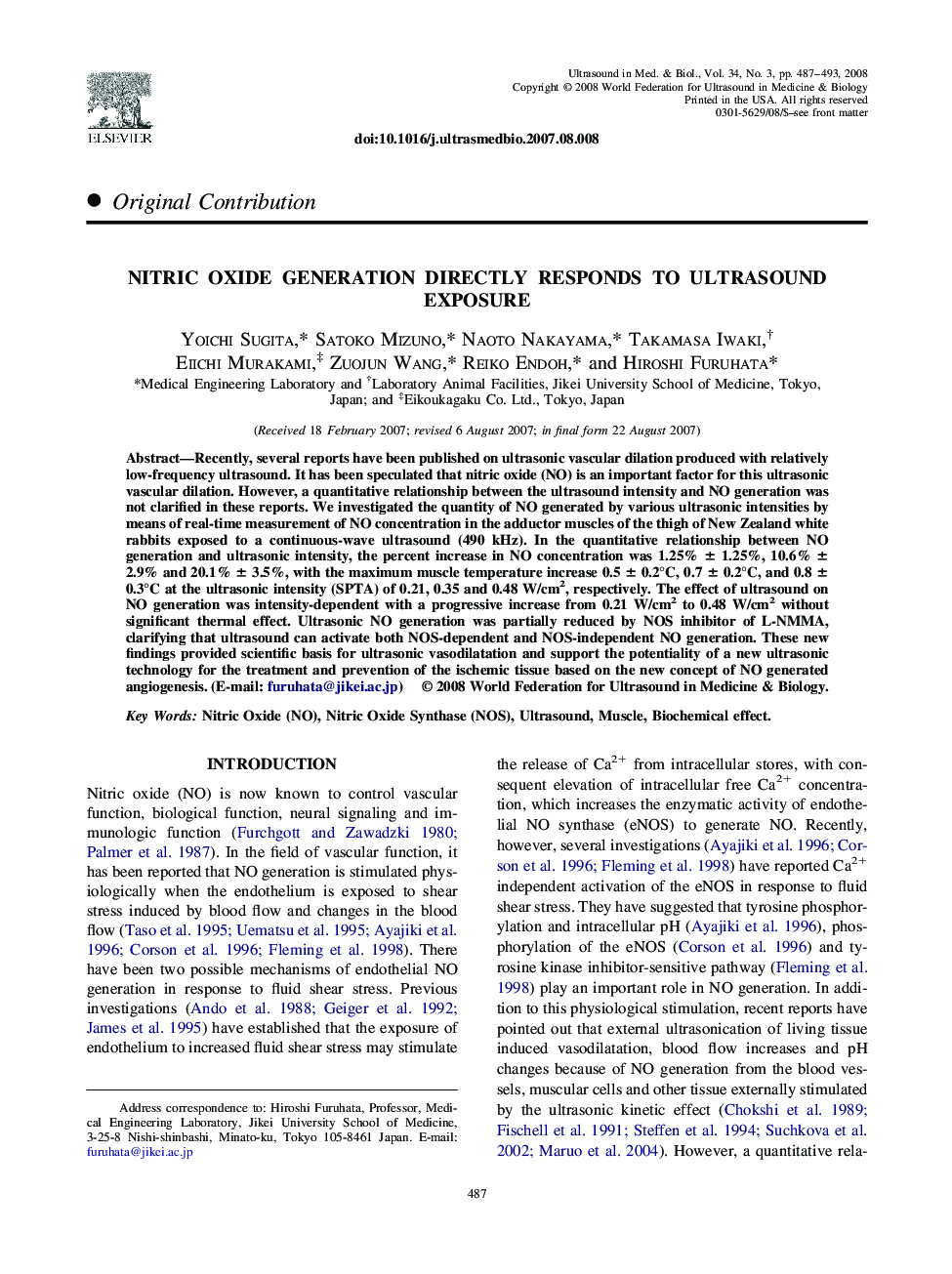| Article ID | Journal | Published Year | Pages | File Type |
|---|---|---|---|---|
| 1761948 | Ultrasound in Medicine & Biology | 2008 | 7 Pages |
Abstract
Recently, several reports have been published on ultrasonic vascular dilation produced with relatively low-frequency ultrasound. It has been speculated that nitric oxide (NO) is an important factor for this ultrasonic vascular dilation. However, a quantitative relationship between the ultrasound intensity and NO generation was not clarified in these reports. We investigated the quantity of NO generated by various ultrasonic intensities by means of real-time measurement of NO concentration in the adductor muscles of the thigh of New Zealand white rabbits exposed to a continuous-wave ultrasound (490 kHz). In the quantitative relationship between NO generation and ultrasonic intensity, the percent increase in NO concentration was 1.25% ± 1.25%, 10.6% ± 2.9% and 20.1% ± 3.5%, with the maximum muscle temperature increase 0.5 ± 0.2°C, 0.7 ± 0.2°C, and 0.8 ± 0.3°C at the ultrasonic intensity (SPTA) of 0.21, 0.35 and 0.48 W/cm2, respectively. The effect of ultrasound on NO generation was intensity-dependent with a progressive increase from 0.21 W/cm2 to 0.48 W/cm2 without significant thermal effect. Ultrasonic NO generation was partially reduced by NOS inhibitor of L-NMMA, clarifying that ultrasound can activate both NOS-dependent and NOS-independent NO generation. These new findings provided scientific basis for ultrasonic vasodilatation and support the potentiality of a new ultrasonic technology for the treatment and prevention of the ischemic tissue based on the new concept of NO generated angiogenesis. (E-mail: furuhata@jikei.ac.jp)
Related Topics
Physical Sciences and Engineering
Physics and Astronomy
Acoustics and Ultrasonics
Authors
Yoichi Sugita, Satoko Mizuno, Naoto Nakayama, Takamasa Iwaki, Eiichi Murakami, Zuojun Wang, Reiko Endoh, Hiroshi Furuhata,
